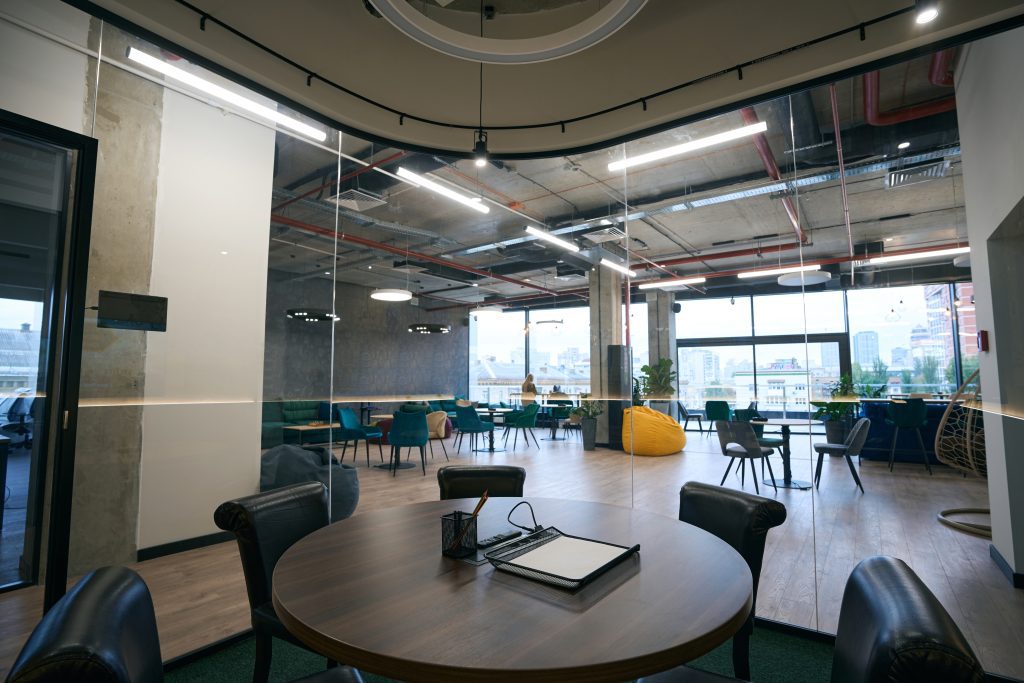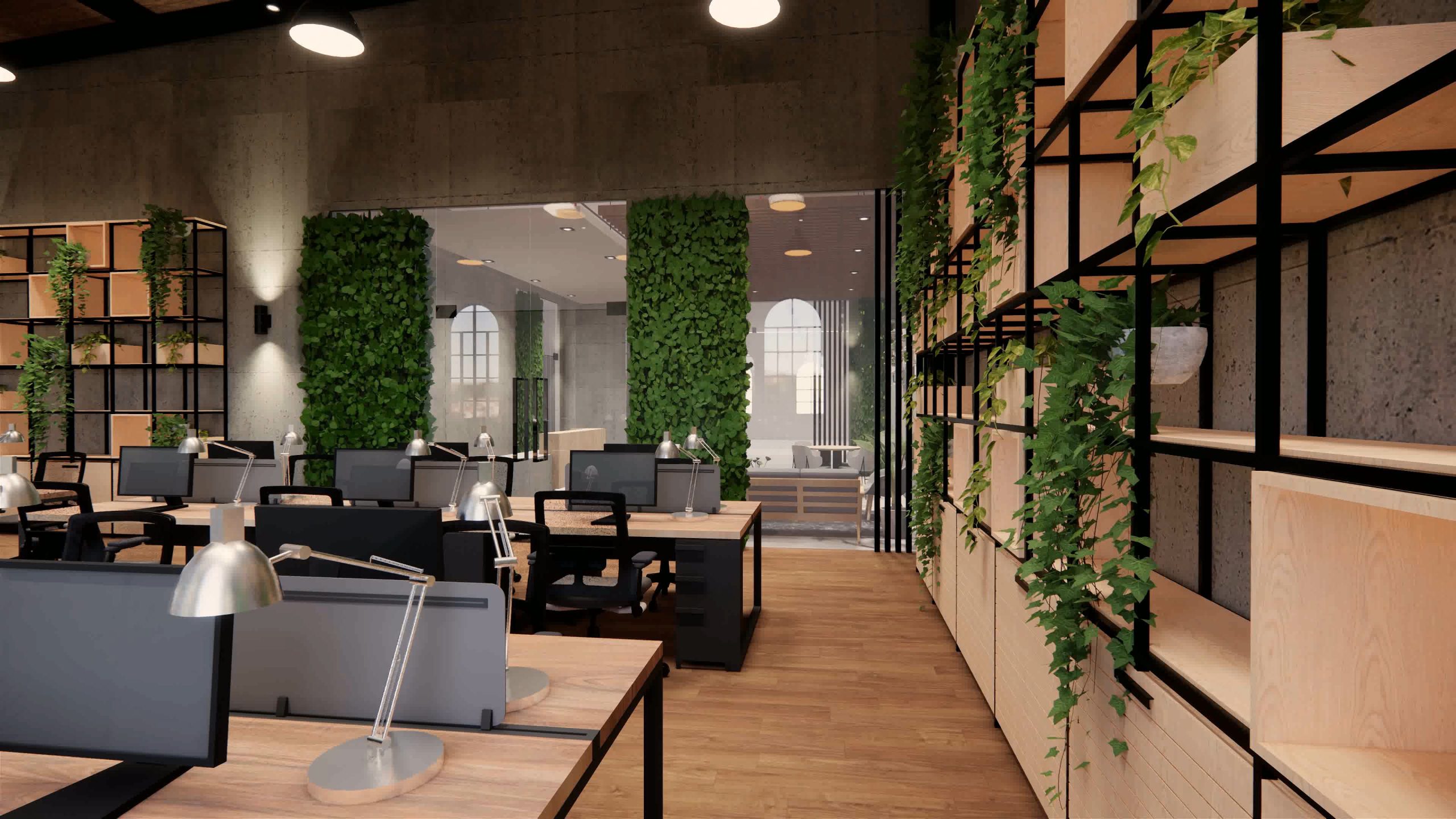Designing a law office can be challenging, as it requires striking the perfect balance between functionality and aesthetics. So, what are some good law office design tips? The goal is to create an environment that fosters productivity and collaboration while also making a strong impression on clients. To achieve this, it is essential to consider not only how the space looks but also how it caters to the specific needs and working styles of legal professionals.
Understanding Law Office Design Fundamentals
A well-designed law office must strike the right balance between aesthetics, function, and culture. Law firms can create office designs that foster professionalism, productivity, and a positive work environment by focusing on objectives and goals.
The Importance of Office Design
Law office design is crucial in creating an environment that fosters productivity, collaboration, and a positive workplace culture. A well-planned law office design can enhance the efficiency of legal professionals and improve client experiences. Attention to aesthetics, functionality, and comfort is essential in creating an inviting and professional atmosphere.
In the legal industry, office design can also directly impact the perception of the firm's professionalism and expertise. Hence, it is essential to ensure the design represents the values and image of the law firm.
Setting Design Objectives and Goals
Setting clear objectives and goals is essential when planning a law office design. Some common objectives include:
-
- Creating efficient workspaces: Design should prioritize the efficient use of space, ensuring that attorneys and staff have ample room for focused work while also enabling easy collaboration when needed. Flexible spaces and modular furniture can help achieve this goal.
- Improving communication and collaboration: Encourage communication and teamwork through open office layouts, comfortable meeting areas, and strategically placed collaboration zones. This can help drive innovation and streamline decision-making within the firm.
- Maintaining a professional atmosphere: The design should exude professionalism while also reflecting the identity of the law firm. Select design elements and materials that convey sophistication and align with the firm's branding.
- Ensuring accessibility and functionality: Consider ergonomics, accessibility, and functionality when incorporating features such as storage, lighting, and technology solutions. This helps create a comfortable and practical work environment, which in turn boosts productivity.

Creating a Welcoming and Professional Environment
Reception Area and Waiting Rooms
The reception area and waiting rooms are the first impressions your clients have of your law firm, so make sure they feel welcoming and professional. Start by choosing comfortable and visually appealing furniture. Provide seating arrangements that foster conversation, as this can help clients feel more at ease. Keep the space clutter-free, and consider displaying law-related artwork or awards to showcase your firm's accomplishments.
Try incorporating natural light whenever possible, as it can create an uplifting atmosphere. If that's not feasible, invest in warm, indirect lighting that mimics natural sunlight. Furthermore, include some greenery, such as potted plants, to help foster a sense of calm and tranquility. A well-selected assortment of reading materials can go a long way in keeping your clients engaged while they wait.
Leveraging Color Theory
Color can profoundly impact the mood and perception of your law office environment. Utilizing color theory can help cultivate a welcoming atmosphere while also reflecting professionalism.
Consider these color options for different areas of your law office:
-
- Reception and waiting areas: Use warm, neutral colors such as beige or taupe to create a welcoming ambiance. You can also add subtle color through artwork or accent furniture.
- Conference and meeting rooms: Opt for cool, calming colors like light blue or green to encourage focus and clear thinking during meetings.
- Private offices: Personalize the space with a color that reflects your personality, or select a color that complements your firm's branding.
- Common areas and break rooms: Encourage relaxation and collaboration with more vibrant colors such as yellow, orange, or teal.
Remember, colors evoke feelings and can contribute to clients feeling welcomed and professionals feeling motivated and focused. Choose your law office colors wisely to create the perfect balance between comfort and professionalism.
Optimizing Lighting and Natural Light
Window Treatments and Light Fixtures
Optimizing lighting in a law office can greatly impact the mood, productivity, and overall comfort of both employees and clients. One key aspect to consider is using natural light to your advantage. Natural light has been shown to enhance the mood and productivity of employees by increasing serotonin levels while reducing eye strain and headaches.
To maximize natural light in the office, consider using light-colored window treatments that allow sunlight to pass through easily. This can help create a brighter and more open environment. Alternatively, solar shades may be used to preserve the view while minimizing glare and maintaining privacy.
Artificial lighting, such as overhead lighting and desk lamps, should provide a balance between comfort and functionality. Choose energy-efficient LED bulbs and fixtures that are adjustable in brightness and color temperature to match the natural light throughout the day.
Positioning Furniture and Workspaces
Strategically positioning furniture and workspaces can have a significant impact on the utilization of natural light within the office. Placing desks, conference rooms, and other workspaces near windows will allow employees to benefit from the increased exposure to natural light. But, make sure also to consider potential glare on computer screens that can be caused by direct sunlight and adjust the angle of furniture accordingly to prevent this issue.
Concerning artificial lighting, consider placing light fixtures in a way that complements and enhances the natural light sources already present in the office. This includes utilizing floor lamps, task lighting, and desk lamps for specific workstations as needed. Lastly, keep pathways, entrances, and exits adequately lit to ensure the safety and comfort of all who enter the law office.
Efficient Office Layout and Space Planning
Throughout the design process, remember to focus on client experience as well. A well-designed law office will be visually inviting, professional, and comfortable for staff and clients.
Open Space Versus Private Offices
When designing a law office, it's essential to strike a balance between open spaces and private offices. Open spaces can encourage collaboration and communication, while private offices provide confidentiality for sensitive discussions and individual work. An ideal floor plan should include a mix of both, with private offices for partners and senior attorneys and open workstations for junior associates. Make sure to consider acoustics, lighting, and furniture to create a relaxed yet efficient work environment.
Incorporating Collaboration Spaces
Incorporating collaboration spaces into your law office design can enhance productivity and encourage teamwork among employees. Breakout rooms, small meeting areas, and even casual seating arrangements can foster collaboration and engagement. Design these spaces with ergonomic furniture and technology, like screens and whiteboards, to support a variety of working styles. Keep the proximity of printers, storage, and outlets in mind when planning these spaces as well.
Flexible Space and Remote Work Considerations
The pandemic has emphasized the importance of flexibility in office design. Flexibility can not only improve the overall office experience for staff but also accommodate evolving work arrangements, such as remote work. Create multipurpose spaces that serve different functions, like meeting rooms that can be converted into workstations for visiting remote employees. Additionally, consider offering more compact “cockpit” offices for individual work areas with minimal storage, catering to the needs of your remote workforce.

Furnishing a Law Office for Comfort and Function
In designing a law office, it is important to balance luxury with professionalism to create a visually appealing and functional space. Using high-end finishes and materials can create an atmosphere of sophistication and class while being mindful of the organization's budget.
Ergonomic and Stylish Furniture
One of the essential aspects of designing a law office is selecting ergonomic and stylish furniture. The right office furniture should provide comfort while maintaining a professional appearance. Choose neutral-colored furniture and add a few colorful accessories to enhance the office's visual appeal. Consider incorporating ergonomic chairs and desks to promote good posture and reduce the risk of muscle strain for the attorney and staff.
Customizing Workstations for Individual Needs
Tailoring workstations to meet individual needs is another crucial aspect of law office design. The workspace should facilitate efficiency and productivity. Some customization options include adjustable standing desks, dual monitor setups, and desk organizers. Incorporating these personalized features can help attorneys manage client files and stay organized, ultimately improving the overall quality of their work.
Impact of Flexible Seating and Amenities
Lastly, the introduction of flexible seating and amenities, such as lounge chairs, couches, and group tables, should be considered. This variety will foster a more comfortable work atmosphere and inspire teamwork.
Additionally, providing amenities like a coffee maker or a well-stocked break room can create a more inviting workplace environment. Ensuring that the workplace's every aspect caters to the attorney's and staff's well-being while maintaining an air of professionalism is imperative for a successful law office design.
Incorporating Visual Elements and Design Aesthetics
By carefully considering the role of artwork and decor, as well as the choice of color palette and textures, a law office can project a professional image while creating a welcoming environment for clients and staff members alike.
The Role of Artwork and Decor
In a law office, creating a professional and inviting atmosphere is important. One way to do this is by incorporating artwork and decor throughout the space. Strategically placing plants can offer a touch of warmth and vitality to the environment. Adding a few well-crafted art pieces can capture a unique and sophisticated feeling.
Consider selecting a centerpiece for the reception area or conference room, such as an eye-catching abstract art piece or a sculpture that reflects the company's values. Incorporating rugs into the design can add dimension, comfort, and warmth.
Color Palette and Textures
In a law office, creating a professional and inviting atmosphere is important. One way to do this is by incorporating artwork and decor throughout the space. Strategically placing plants can offer a touch of warmth and vitality to the environment. Adding a few well-crafted art pieces can capture a unique and sophisticated feeling.
Consider selecting a centerpiece for the reception area or conference room, such as an eye-catching abstract art piece or a sculpture that reflects the company's values. Incorporating rugs into the design can add dimension, comfort, and warmth.

Integrating Technology and Connectivity
Incorporating technology into your law office design can enhance workflow efficiency and simplify communication between team members. Focusing on wireless communication and charging solutions, as well as conference room setup and audio-visual equipment, is key to creating a tech-savvy, connected work environment.
Wireless Communication and Charging Solutions
In today's world, staying connected is essential for efficient legal practice operations. Investing in wireless communication systems allows staff members to work remotely and on the go, increasing flexibility and productivity. Some key components to consider for seamless wireless communication include:
-
- Reliable Wi-Fi: Ensuring stable and secure Wi-Fi connections allows employees to work on their laptops, tablets, or smartphones freely throughout the office space.
- Wireless charging stations: Integrating wireless charging solutions in common areas, such as lounges or conference rooms, eliminates clutter caused by cords and makes it easy for employees to keep their devices charged.
Conference Room Setup and Audio-Visual Equipment
A well-designed conference room is necessary for successful meetings, presentations, and collaborative decision-making. When designing an efficient and functional conference room, consider the following aspects:
-
- Space layout: Arrange seating and furniture to accommodate various meeting styles and group sizes. Provide ample seating, ergonomic workstations, and accessible power outlets for laptop users.
- Lighting: Ensure adequate lighting with both natural and artificial sources, taking into consideration visual comfort, energy consumption, and adjustable options for different needs.
- Audio-visual equipment: Equipping the conference room with state-of-the-art audio and visual tools, such as smartboards, large-format displays, or videoconferencing setups, enables seamless communication, remote meetings, and impactful presentations.
By focusing on these areas, you can successfully integrate technology and connectivity into your law office's interior design, creating a more flexible, productive, and efficient work environment.
Taking Privacy and Noise Control into Consideration
In the design of a law office, taking privacy and noise control into account is essential. Addressing these factors allows for concentration and client confidentiality.
Glass Walls and Office Partitions
One option for promoting privacy within a law office is the use of glass walls and office partitions. Glass walls allow natural light to flow through the space while still providing a level of separation between workstations. These barriers can be transparent, frosted, or tinted, depending on your desired level of privacy. Opaque office partitions can also create a more private and less stuffy environment. Some ways to utilize glass walls and partitions include:
-
- Enclosing private offices for attorneys
- Creating designated meeting rooms or client consultation spaces
- Partitioning workstations to provide privacy without isolating employees
Acoustic Solutions and Noise Reduction Strategies
In addition to privacy concerns, law offices must also address the issue of noise. Excess noise can reduce productivity and lead to a stressful work environment. To mitigate noise-related issues, consider implementing the following acoustic solutions and noise reduction strategies:
-
- Insulate walls and ceilings to block the transmission of sound between rooms
- Install acoustic panels in common areas and meeting spaces to reduce echoing and reverberation
- Use carpeting or area rugs to absorb sound and create a quieter working environment
- Provide noise-canceling headphones to employees who require additional noise control
By incorporating glass walls or office partitions in your law office design and employing acoustic solutions and noise reduction strategies, you can achieve a harmonious balance of privacy and comfort for employees and clients alike.
Wrap-Up on What are Some Good Law Office Design Tips
When designing a law office, it's important to consider both form and function. The design should reflect the company culture and values while creating an environment that promotes collaboration and the well-being of team members. Office layouts should be adaptable to accommodate both individual work and team collaborations. Additionally, incorporating different types of spaces, such as single-size offices and dedicated collaboration areas, can cater to the diverse needs of attorneys and staff.
Another crucial element in law office design is the focus on client experience. Offices should be designed with the client in mind, ensuring the aesthetic is professional, inviting, and representative of the firm's values. This includes paying attention to details like lighting, furniture, and artwork, which can all contribute to an overall cohesive and impressive atmosphere. By considering these design principles, law firms can create a workspace that truly enhances their workplace culture and showcases their professionalism.




